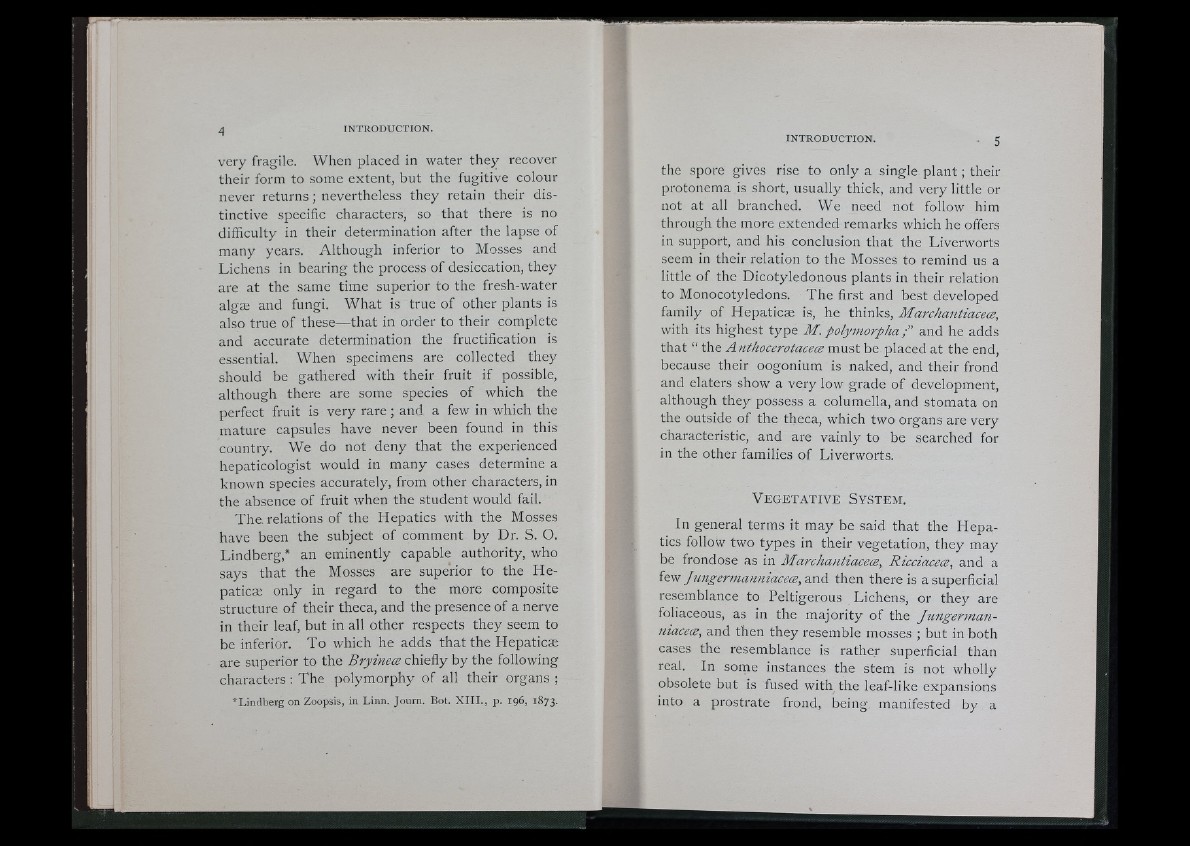
very fragile. When placed in water they recover
their form to some extent, but the fugitive colour
never returns; nevertheless they retain their distinctive
specific characters, so that there is no
difficulty in their determination after the lapse of
many years. Although inferior to Mosses and
Lichens in bearing the process of desiccation, they
are at the same time superior to the fresh-water
algse and fungi. What is true of other plants is
also true of these— that in order to their complete
and accurate determination the fructification is
essential. When specimens are collected they
should be gathered with their fruit if possible,
although there are some species of which the
perfect fruit is very rare ; and a few in which the
mature capsules have never been found in this
country. We do not deny that the experienced
hepaticologist would in many cases determine a
known species accurately, from other characters, in
the absence of fruit when the student would fail.
The. relations of the Hepatics with the Mosses
have been the subject of comment by Dr. S. O.
Lindberg,* an eminently capable authority, who
says that the Mosses are superior to the Hepaticae
only in regard to the more composite
structure of their theca, and the presence of a nerve
in their leaf, but in all other respects they seem to
be inferior. To which he adds that the Hepaticae
are superior to the Bryimce chiefly by the following
characters; The polymorphy of all their organs ;
^Lindberg on Zoopsis, in Linn. Journ. Bot. XIII., p. 196, 1873.
the spore gives rise to only a single p lan t ; their
protonema is short, usually thick, and very little or
not at all branched. We need not follow him
through the more extended remarks which he offers
in support, and his conclusion that the Liverworts
seem in their relation to the Mosses to remind us a
little of the Dicotyledonous plants in their relation
to Monocotyledons. The first and best developed
family of Hepaticae is, he thinks, Marchantiacece,
with its highest type M. p o lym o r p h a and he adds
that “ A nthocerotacece must be placed at the end,
because their oogonium is naked, and their frond
and elaters show a very low grade of development,
although they possess a columella, and stomata on
the outside of the theca, which two organs are very
characteristic, and are vainly to be searched for
in the other families of Liverworts.
V e g e t a t i v e S y s t e m .
In general terms it may be said that the Hepatics
follow two types in their vegetation, they may
be frondose as in Marchantiacece, Ricciacece, and a
few JungermanniacecB, and then there is a superficial
resemblance to Peltigerous Lichens, or they are
foliaceous, as in the majority of the Jungerman-
niacecE, and then they resemble mosses ; but in both
cases the resemblance is rather superficial than
real. In some instances the stem is not wholly
obsolete but is fused with the leaf-like expansions
into a prostrate frond, being, manifested by a